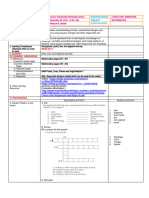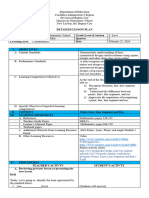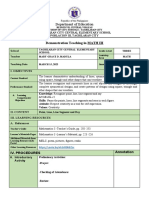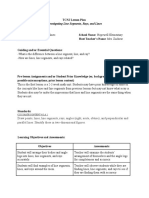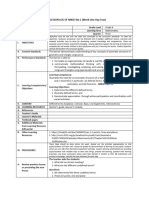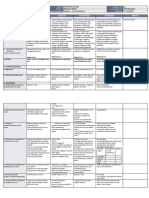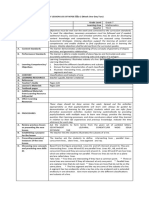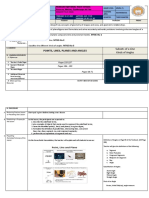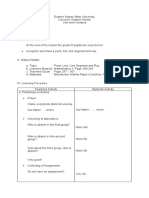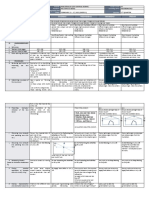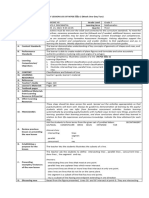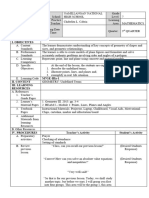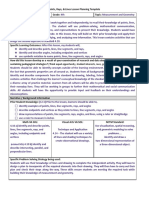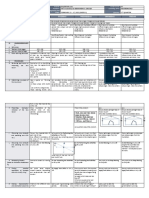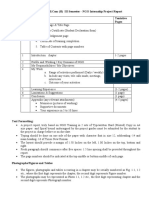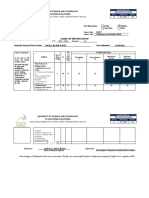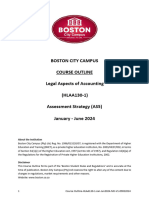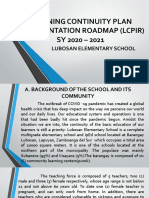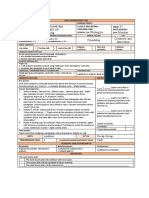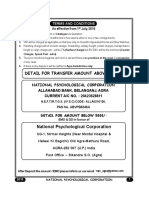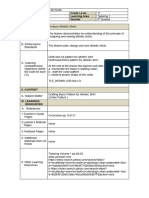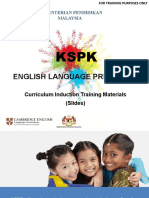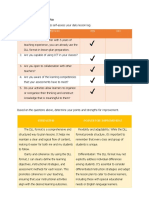CARANHUG
School/ ELEMENTARY Grade
THREE
District SCHOOL/ JAVIER Level:
II
MATATAG Teache MARIA GLENDA Learning
K to 10 MATH
Curriculum r: B. ZABALA Area:
Daily
Quarter/Week/
Lesson Date: June 30, 2025 Day Q1/W3/D1
Plan
MATH
10:15-11:00
I. CURRICULUM CONTENT, STANDARDS, AND LESSON COMPETENCIES
A. Content Standards The learners should have knowledge and understanding of points, lines, line
segments, and rays.
B. Performance By the end of the quarter, the learners are able to recognize and draw points,
Standards lines, lines segments, rays, and parallel and perpendicular lines
C. Learning The learners recognize, using models, and draw a point, line, line segment, and
Competencies ray
and Objectives
D. Content POINTS, LINES, LINE SEGMENTS, AND RAYS
E. Integration
II. Learning Resources:
MATATAG K TO 10 CURRICULUM OF THE K TO 12 PROGRAM
Lesson Exemplar
III. Teaching and Learning Procedures
A. Activating Prior Draw a rectangle, square, triangle, and circle on the board. Then, ask the
Knowledge learners which of these shapes have sides and corners.
Ask the learners to identify objects or items inside the classroom that have a side
B. Establishing a Today we will learn how to illustrate points, lines, line segments, and rays using
Lesson Purpose models and in real-life.
C. Developing and Read the following words:
Deepening points, lines, line segments, rays, straight, sides, endpoint, arrowheads
Understanding
Draw four dots on the board.
Describe what you drew.
In Mathematics, we refer to these dots as point.
Prepare two popsicle sticks (or straws) with one arrowhead each, another
popsicle stick without an arrowhead, and enough circular clays
Describe the figure created.
What is the difference between a line and a line segment? Line extends infinitely
in opposite directions as represented by the two arrowheads, while a line
� segment has two endpoints and no arrowhead.
What is the difference between a ray and a line segment?
Ray has one endpoint and one arrowhead indicating the direction in which it
extends infinitely, while a line segment has two endpoints and no arrowhead.
What are the real-life examples that represent a line segment, where there is an
end on both sides?
Look at the illustration.
1. Name all the points in the figure.
2. Name all the line segments in the figure.
3. Name all the rays in the figure.
4. Name all the lines in the figure.
D. Making What is the difference between a point, a line segment, a ray, and a line?
Generalizations
IV.EVALUATING LEARNING; FORMATIVE ASSESSMENT AND TEACHER’S REFLECTION
E. Evaluation Recognizing Points, Line Segments, Rays, and Lines
Write in the blank whether the given picture represents a point, line, ray, or line
segment.
(Additional activities
for application or
remediation)
F. Teacher’s Remarks
G. Reflection
A. No of learners
who earned 80%
in the evaluation
B. No. of learners
who require
additional
activities for
remediation
C. Did the remedial
lessons work?
No. of learners
who have caught
up with the
lesson.
Prepared by:
� MARIA GLENDA B. ZABALA Noted:
T-I FLORDELIZA S. MATOL,
PhD
SCHOOL HEAD



